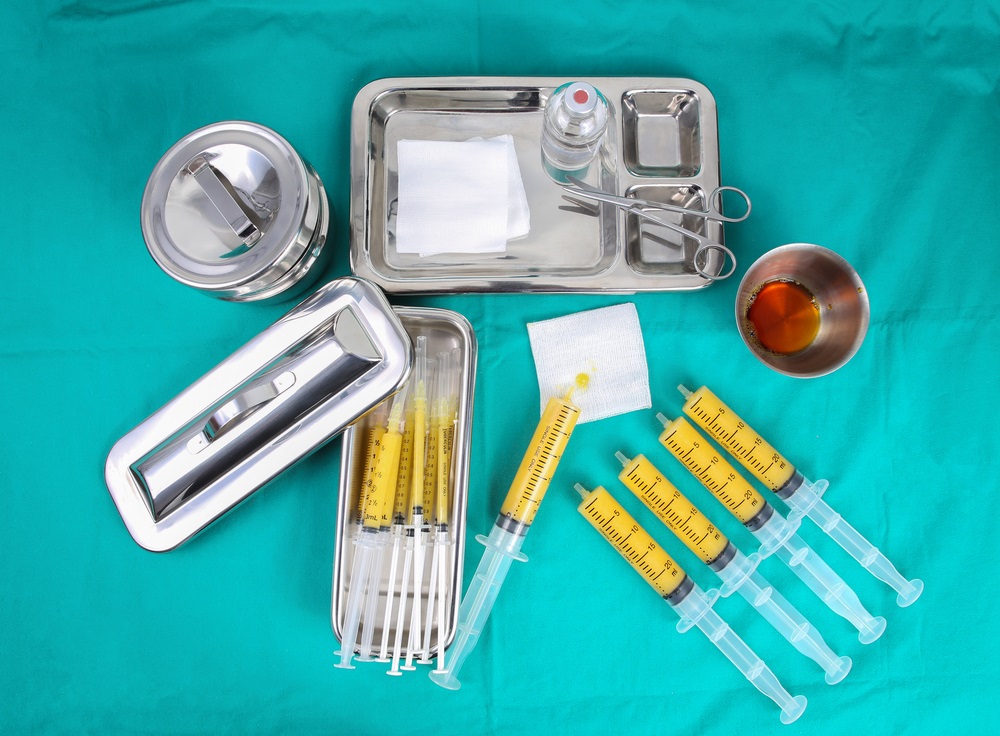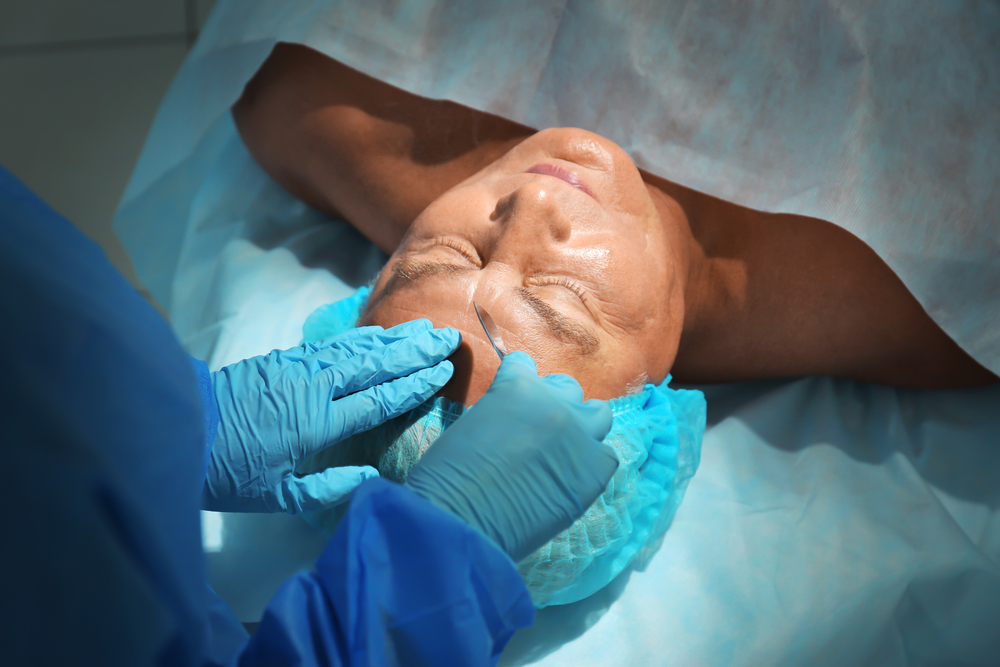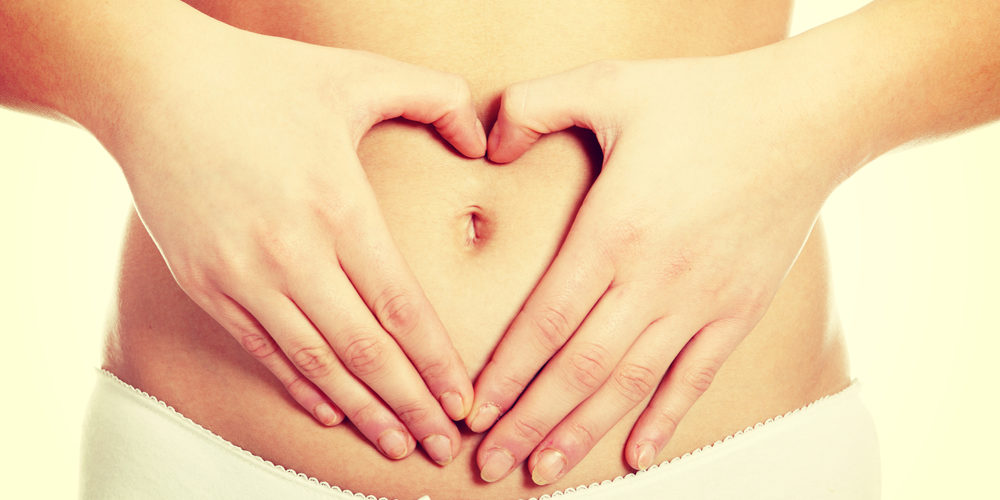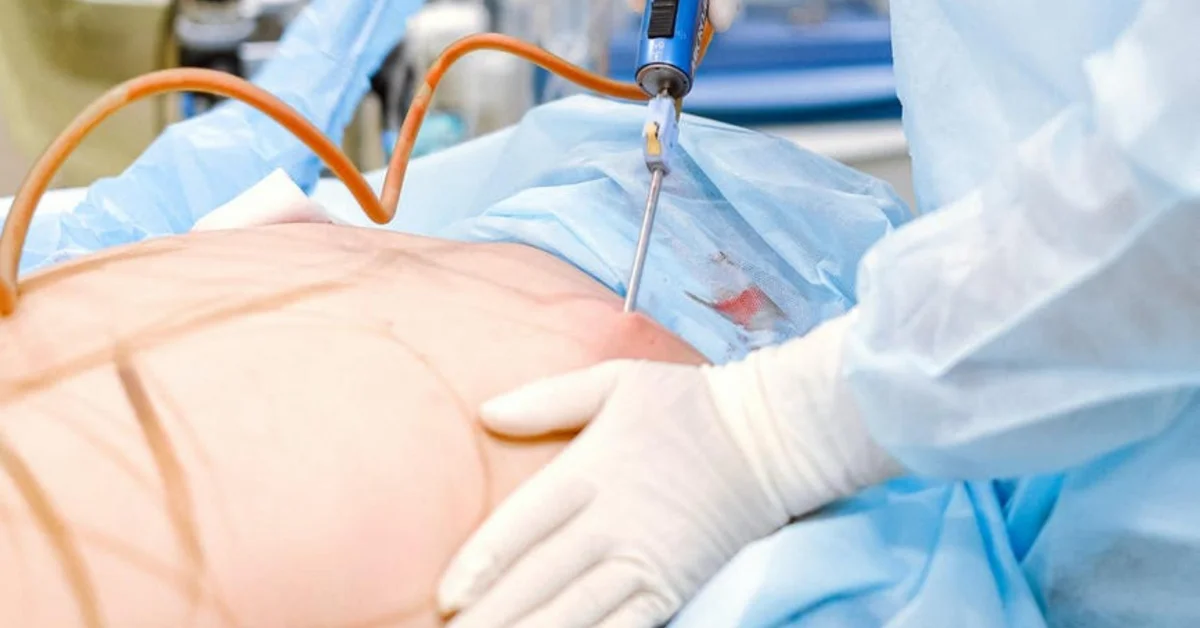- Facial fat transfer is an increasingly popular cosmetic procedure for facial rejuvenation.
- A facial fat transfer consists of “harvesting” fat from the thighs, belly or buttocks and injecting it into multiple points on the face.
- Facial fat transfers can achieve very natural-looking results and carry lower long-term costs when compared with synthetic injectable fillers.
What is a facial fat transfer?
Facial fat transfer, also known as fat grafting or microlipoinjection, is an increasingly popular procedure for facial rejuvenation — and for good reasons.
First, it’s important to understand that the fat on our tummies, thighs and buttocks is essentially the same “stuff” as the subdermal fat on our faces, with some minor differences. A small amount of adipose tissue can therefore be harvested from a location where fat is plentiful, like the thighs or belly, and re-injected into specific areas of the face. The results are generally very natural-looking and long-lasting.
This is what doctors call an “autologous” procedure — meaning the injected material comes from your own body. In many ways, an autologous procedure is far safer than injecting a foreign or synthetic material. Because your body recognizes the injected material as its own, allergic reactions are far less likely than with synthetic dermal fillers.
How do facial fat transfers work?
While the injections are performed much in the same ways as traditional dermal fillers, harvesting fat from the thighs, buttocks or belly is a little more invasive, and must therefore be done in an operating room.
Depending on whether or not it can establish a blood supply in its new location, some of the newly injected fat may not survive the transfer. If the fat successfully establishes a blood supply at its injection point, the graft will become permanent and continue to grow. If not, it will die off and the plumping effects will fade away over time.
Typically, between 20% and 80% of the fat injections will successfully establish a blood supply and “take.” Because a percentage of the fat transfer may fail to survive in its new location, it may be necessary to return to your plastic surgeon for additional fat injections at a later date, until the graft can successfully establish a blood supply.
As Cincinnati-based plastic surgeon Dr. Jon Mendelsohn explains, this isn’t necessarily a cause for concern. “Fat is predictably unpredictable,” says Mendelsohn. “Because some of it doesn’t survive, secondary treatments are quite often necessary.”
Note that in such cases, your second visit may not require additional harvesting. Many doctors can store your fat cells “on ice,” and use them for future injections.
Preparation for surgery
During your initial consultation, your doctor will evaluate your options by determining potential harvesting and injection sites.
At this point, it is strongly advised that you spend some time going through actual before-and-after photos of your doctor’s work. As with any cosmetic procedure, the skill and aesthetic judgement of your doctor is one of the most important success factors. Also be sure to talk to your doctor about the risks involved with facial fat transfers, and the general level of satisfaction among prior patients.
Prior to the harvesting process, you will be advised to avoid any medications and supplements which might affect blood clotting, such as fish oil, vitamin E, and aspirin. Your doctor may also instruct you to avoid eating anything after dinner on the day before your procedure. It’s also important to stay hydrated by drinking lots of water, both before and after your procedure.
Remember that the quality of the outcome partially depends on your own personal preparations, and your ability to follow your doctor’s advice prior to the procedure.
Procedure
On the day of the procedure, your doctor will perform a small incision at the harvesting site — usually on your thigh, flank or buttock — and liposuction the required amount of fat. Note that unlike traditional liposuction, the amount of fat that is extracted is very small, and does not have any lasting effect on the appearance of the donor site.
The harvested fat is then processed in a centrifuge to separate the different elements and remove impurities. This ensures that the fat to be re-injected is of the highest quality.
As Beverly Hills plastic surgeon Dr. Timothy Katzen explains, “Abdominal fat is suctioned by hand, and centrifuged to separate the good fat from other tissue. Using a special cannula, injections are then performed in the nasolabial fold, marionette lines, parentheses lines, temporal region, and lips.”
Some doctors will give you the choice between receiving your injections on the same day as the harvesting, or having your extracted fat frozen and injected at a later date. However, it is more common to have the entire procedure performed in one session. Either way, both parts of the procedure are painless and typically involve only local anesthesia.
Fat transfer recovery and side effects
Remember that during the post-op period you’re going to feel sore in two different places: at the extraction site on your thighs, belly or buttocks — and at the fat injection points on your face.
The swelling will be at its worst for the first three or four days. You’re likely to see bruising at both sites for the first ten days or so, which you can cover up with make-up as required. Within about three to six weeks the bruising should be completely healed.
As with many other cosmetic procedures, the best results often appear after a few months, as the transferred fat settles in. Most patients report seeing excellent results within about three months.
Scarring at the donor site is possible, but typically it is barely visible. Fat grafting incisions are usually very tiny, and doctors typically choose a harvesting location that will be well hidden. Any scarring generally fades over time.
How much does a facial fat transfer cost?
The cost of any procedure depends largely on your geographic location, the surgeon’s reputation, and your specific aesthetic goals. In general, a facial fat transfer can cost anywhere between $2,500 and $7,000. For a more specific quote, contact a board-certified plastic surgeon to discuss your goals and options.
Are there any risks involved?
The risks involved with facial fat transfers are very low when compared to other cosmetic procedures. The most commonly reported issues are mild scarring at the extraction site, and slightly discolored skin (a condition known as dyschromia), which can be caused by the harvesting.
Depending on the location of the fat injections, there is a potential for lumpy or uneven skin caused by the injected fat. These odds are higher for fat injection points located in the soft skin under the eyes.
And because there is a chance that the fat transfer may not “take,” there is also a risk that the procedure creates uneven results that will require touching up on subsequent visits. Talk to your doctor about your risks based on your age, weight, and specific aesthetic concerns.
Fat injections vs. dermal fillers
Facial fat injections differ from dermal fillers in a few important ways.
Dermal fillers made from hyaluronic acid typically produce faster results than facial fat transfers. And if you’re not happy with your injectable fillers, hyaluronidase can be used to reverse the effects almost instantly. The permanent nature of fat transfers makes “un-doing” poor results a more challenging procedure.
Many doctors recommend “trying out” the look of injectable dermal fillers first, before moving on to facial fat grafting. Since dermal fillers are temporary and can be easily removed, you may want to start with the faster and lower-risk option before considering any permanent solutions.
“In the face, I prefer to test the new patient’s new look with hyaluronic acid-based fillers, in case he or she is unhappy with the changes,” explains Newport Beach plastic surgeon Dr. Garrett Wirth.
Long Island-based plastic surgeon Dr. Brian Pinsky follows a similar approach. “If the patient isn’t happy, the product can be dissolved,” says Pinsky. “But if there is an issue with fat grafting, it requires surgery to correct. Typically, I would offer a hyaluronic acid filler first. If the patient is pleased with the results, I may discuss fat transfer at that time.”
While the risks of both procedures are very low, facial fat transfers do affect two sites on the body, and may cause minimal scarring at the extraction site. On the other hand, the autologous nature of fat transfers mean that the risk of infection is extremely low, and your body is very unlikely to suffer any adverse immunologic reactions.
In terms of costs, injectable fillers are less expensive — but since you’ll need to revisit your dermatologist or plastic surgeon repeatedly over the coming years, the costs of repeated dermal filler procedures can be higher over time.
Both solutions are extremely popular. If you’re looking for a “quick fix,” dermal fillers are tried-and-true, fast, easy, and have a short recovery period. If you’re looking for a more permanent route to facial rejuvenation, you might want to talk to your dermatologist or plastic surgeon about facial fat grafting.









